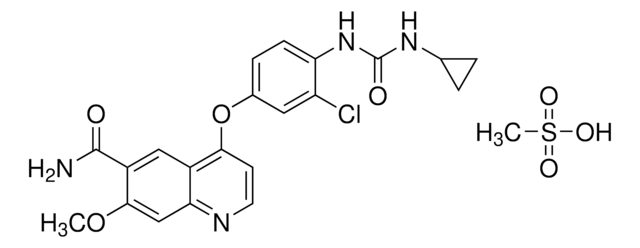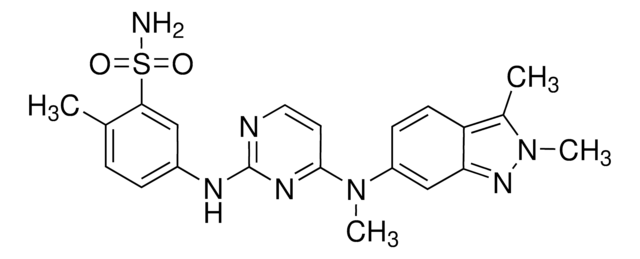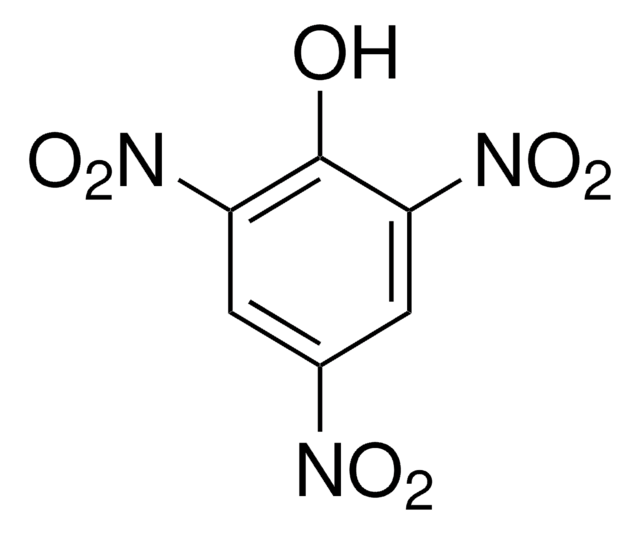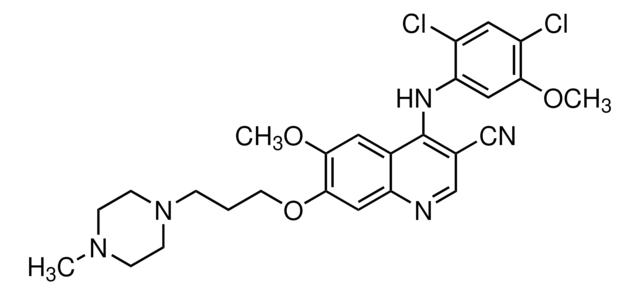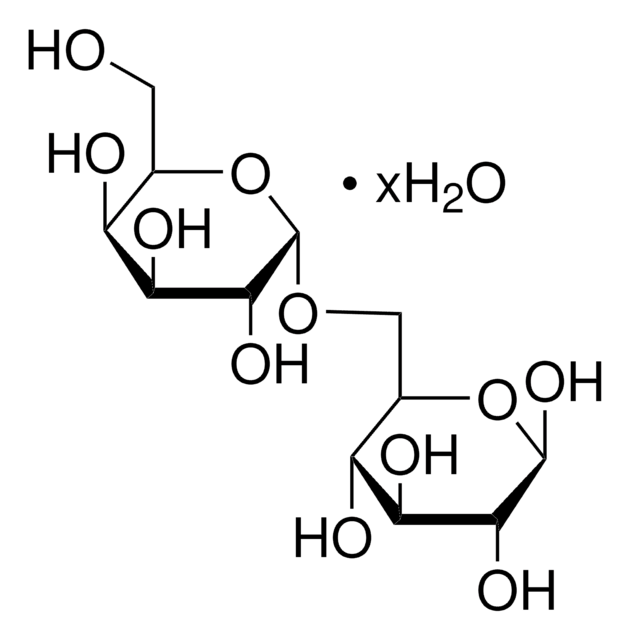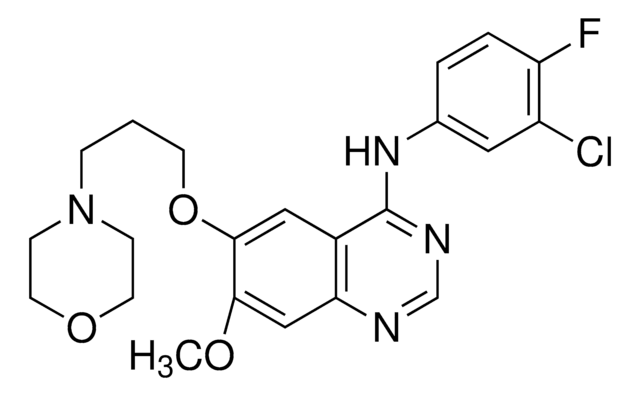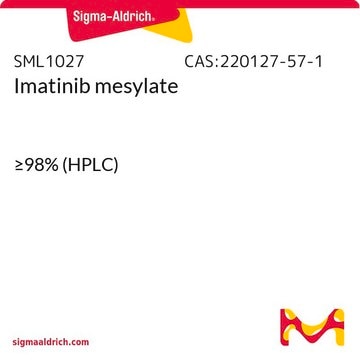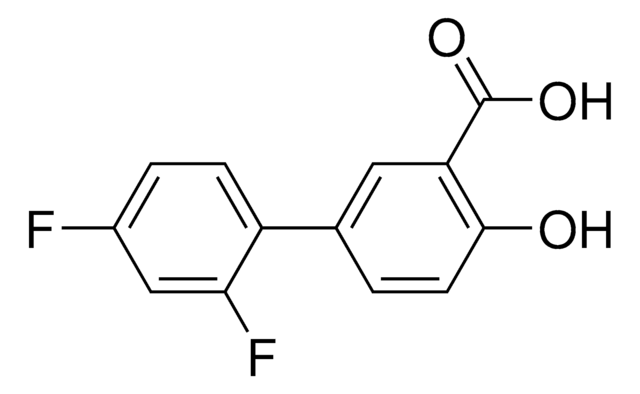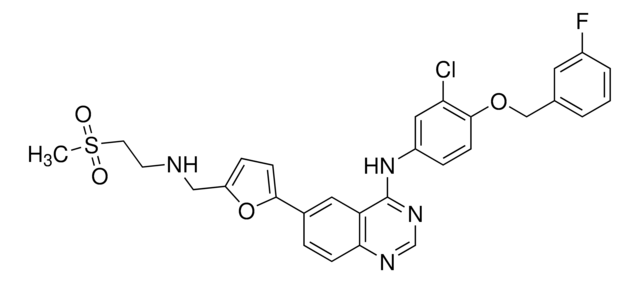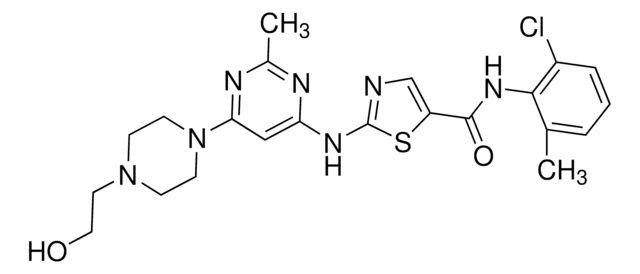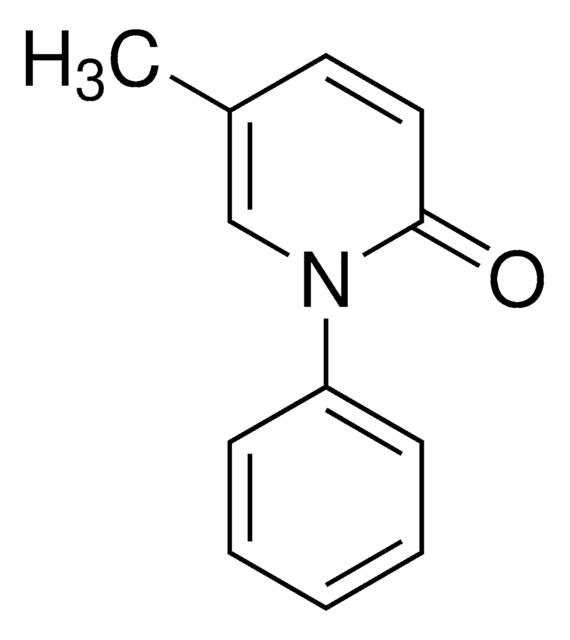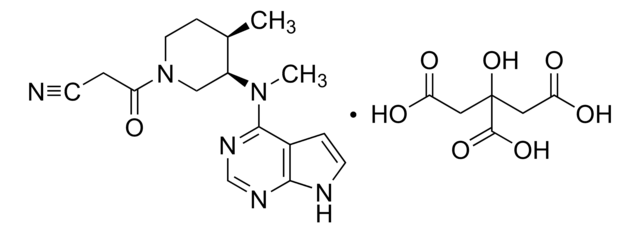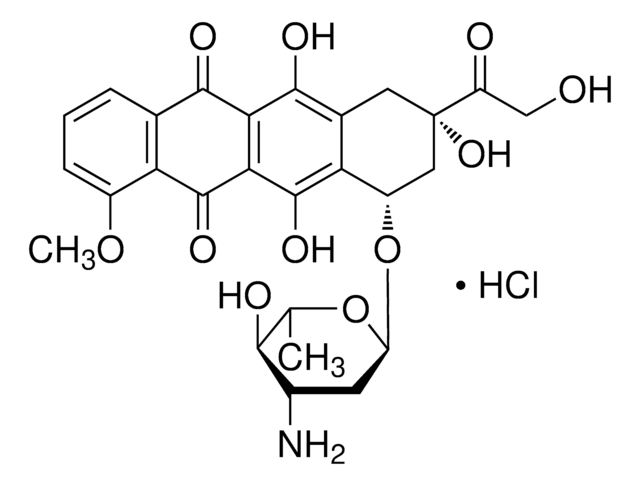PZ0193
Axitinib
≥98% (HPLC), powder, tyrosine kinase inhibitor
Synonym(s):
AG-013736, N-Methyl-2-((3-((1E)-2-(pyridin-2-yl)ethenyl)-1H-indazol-6-yl)sulfanyl)benzamide
About This Item
Recommended Products
product name
Axitinib, ≥98% (HPLC)
Quality Level
assay
≥98% (HPLC)
form
powder
color
white to tan
solubility
DMSO: ≥8 mg/mL
storage temp.
room temp
SMILES string
CNC(=O)c1ccccc1Sc2ccc3c(\C=C\c4ccccn4)n[nH]c3c2
InChI
1S/C22H18N4OS/c1-23-22(27)18-7-2-3-8-21(18)28-16-10-11-17-19(25-26-20(17)14-16)12-9-15-6-4-5-13-24-15/h2-14H,1H3,(H,23,27)(H,25,26)/b12-9+
InChI key
RITAVMQDGBJQJZ-FMIVXFBMSA-N
Gene Information
human ... FLT1(2321) , FLT4(2324) , KDR(3791)
Application
Biochem/physiol Actions
Features and Benefits
Legal Information
signalword
Warning
hcodes
Hazard Classifications
Acute Tox. 4 Oral - Aquatic Acute 1
wgk_germany
WGK 3
flash_point_f
Not applicable
flash_point_c
Not applicable
Certificates of Analysis (COA)
Search for Certificates of Analysis (COA) by entering the products Lot/Batch Number. Lot and Batch Numbers can be found on a product’s label following the words ‘Lot’ or ‘Batch’.
Already Own This Product?
Find documentation for the products that you have recently purchased in the Document Library.
Customers Also Viewed
Related Content
Discover Bioactive Small Molecules for Kinase Phosphatase Biology
Our team of scientists has experience in all areas of research including Life Science, Material Science, Chemical Synthesis, Chromatography, Analytical and many others.
Contact Technical Service